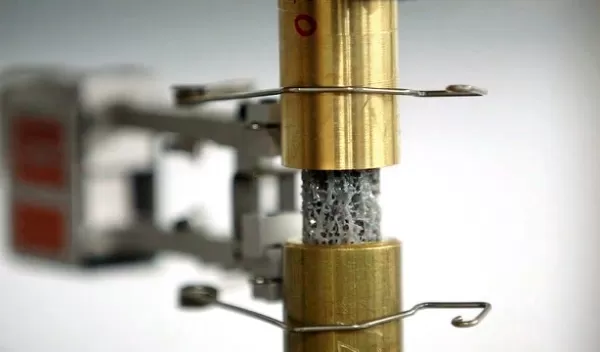
Discovery may lead to osteoporosis treatment
NSF-funded researchers have made a new discovery about how seemingly minor aspects of the internal structure of bone can be strengthened to withstand wear and tear, a finding that could help patients suffering from osteoporosis. It could also lead to the creation of more durable, lightweight materials for the aerospace industry.
The team's paper, "Bone-Inspired Microarchitectures Achieve Enhanced Fatigue Life," was published in the journal Proceedings of the National Academy of Sciences.
Cornell University researchers led by Christopher Hernandez used a 3D printer to manufacture bone-inspired material made from a urethane methacrylate polymer, then tested for its durability. The researchers were able to increase the material's fatigue life by up to 100 times by strengthening internal rod-like struts.
For decades, scientists studying osteoporosis have used X-ray imaging to analyze the structure of bones and pinpoint strong and weak spots. Density is the main factor that is usually linked to bone strength and, in assessing that strength, most researchers look at how much load a bone can handle at one time.
But the Cornell scientists are interested in long-term fatigue life, or how many cycles of loading a bone can bear before it breaks.
"The best way to understand the fatigue properties of material is to think about a part in your car that breaks every so often, so you have to take it to the shop," says Hernandez. "Well, why did it break? It was clearly strong enough, because it worked for months, years, just fine. But after cycling and cycling and cycling, tens of millions of cycles, it breaks. We've known about this property of materials for 150 years, and it's embedded in the design of everything we do. But not too many people had done this kind of study of the bone."
The research is funded by NSF's Directorate for Engineering.


